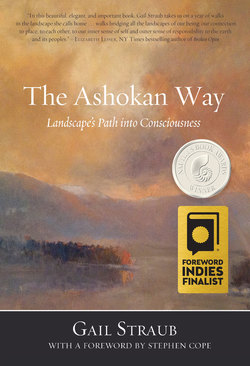Читать книгу The Ashokan Way - Gail Straub - Страница 13
На сайте Литреса книга снята с продажи.
Ghosts and Voices Haunt this Place
ОглавлениеAfter the rain, it’s a warm and misty day as shrouds of fog gently settle in the basins of this mountain valley. Like lazy giants, my towering companions are stretched out before me. Mountains from the Burroughs Range—Slide, Cornell, and the Wittenberg—rest next to Lone, Balsam Cap, Rocky, Friday, and Table from the neighboring Bushwack Range. Over the years, David and I have hiked many of these peaks, and they feel like old friends. Along the eagle’s peninsula where bald eagles have nested for many years, bare, white birch trees form the boney spine of the forest. Just a few geese still linger on the Ashokan this late in the year before honking off and heading south. On the water the mists are rising up now, following the geese. I am here alone today with all of this silent beauty.
Intoxicated by the untamed loveliness, it’s easy to forget that the Ashokan’s twelve-mile stretch of open water was artificially created to supply water to one of the world’s largest cities. And it’s convenient to disregard the thousands of people who had to give up their homes to make way for this reservoir. Most days when I walk here I don’t think about these truths, buried in the past as they are. But on some mornings when shrouds of mist mingle with the white bones of trees, the ghosts and voices that haunt this landscape walk right next to me. The people who lived in the towns underneath this place start telling me their stories.
At the turn of the nineteenth century, representatives of the City of New York arrived in the small town of Ashokan to plan for construction of a great dam on the Esopus Creek at Olive Bridge. Called the last of the handmade dams, the concrete structure was part of the Ashokan Reservoir project, a multimillion-dollar endeavor that forever changed this valley’s way of life as well as the shape of its land. New York—the fastest growing city in America at the time—was in what was then called a water famine, and the city’s power brokers were ready to do anything to alleviate the dire situation. A private company, the Ramapo Water Company, was formed by the most influential politicians from both parties in the state legislature. This coalition eventually secured a power far wider than those of local municipalities, enabling it to obtain the water rights throughout the state of New York. The Ramapo water company acquired the water rights to build the Ashokan reservoir by simply filing plans with the local county clerk. The rural people of this valley didn’t stand a chance against the powerful political interests of such an urban force and soon anger, resentment, and fear thickened the air.
By 1908 the sleepy village of Ashokan had become a modern town supporting the construction of the dam. More than three thousand workers lived on the slope of Winchell Hill at Brown’s Station, the encampment built for the laborers.
There were three schools, three churches, numerous brothels, a small hospital, a police station, a firehouse, and a bakery that produced five thousand loaves of bread a day. Widely diverse peoples co-existed; Italians, Irish, African-Americans, Russians, Poles, Swedes, Austrians, and Germans were all part of the mix. Many of the immigrants didn’t speak any English. At night along with the infamous brawls, cockfights, and mule chariot races, one smelled cuisine and heard music from multiple corners of the globe.
But this colorful multinational encampment was not where the tragedy lived. Ordered by New York City to sell their land, many of the residents of the Town of Ashokan were given just ten days notice to pack up and leave their homes forever. Adding to the shock and horror of dislocation was the fact that they were often paid far less than their land was worth. By 1912 the City of New York had purchased twenty-one thousand acres of land, over fifteen-thousand acres of which were in Ashokan. Nearly two thousand people in Ashokan were forced to leave their homes. Many had farmed their property over multiple generations and so strong was their love of this land that the vast majority resettled within twenty-five miles of the farms they had lost.
And then in 1914 came the blasting and burning away of the towns that would eventually be flooded with the waters of the Ashokan Reservoir: Shokan, West Shokan, Olivebridge, and Olive City among others. Within months the Village of Ashokan, along with its encampment at Brown’s Station looked like a ghost town; not even a chimney was left standing. It took nine years to complete the last of the handmade dams, but finally the pure waters of the Catskill Mountains left the giant Ashokan Reservoir and made their way through long aqueducts to New York City. What was a jubilant celebration in the city was an epic loss for the people of this valley.
Close to one-hundred years later, here I am, walking along the shores of lost towns and feeling their echoes and shadows right next to me. Though I can try to ignore the past of this place, the landscape never forgets. The truth is a simple one: the rural communities of the Esopus River Valley were sacrificed for the needs of New York City. The Ashokan Reservoir holds the memory of those lost beneath it, and the mountains surrounding it store the recollections of vanished villages. The old survives alongside the new, a reminder that the inescapable beauty of this place is elegiac.
◊
